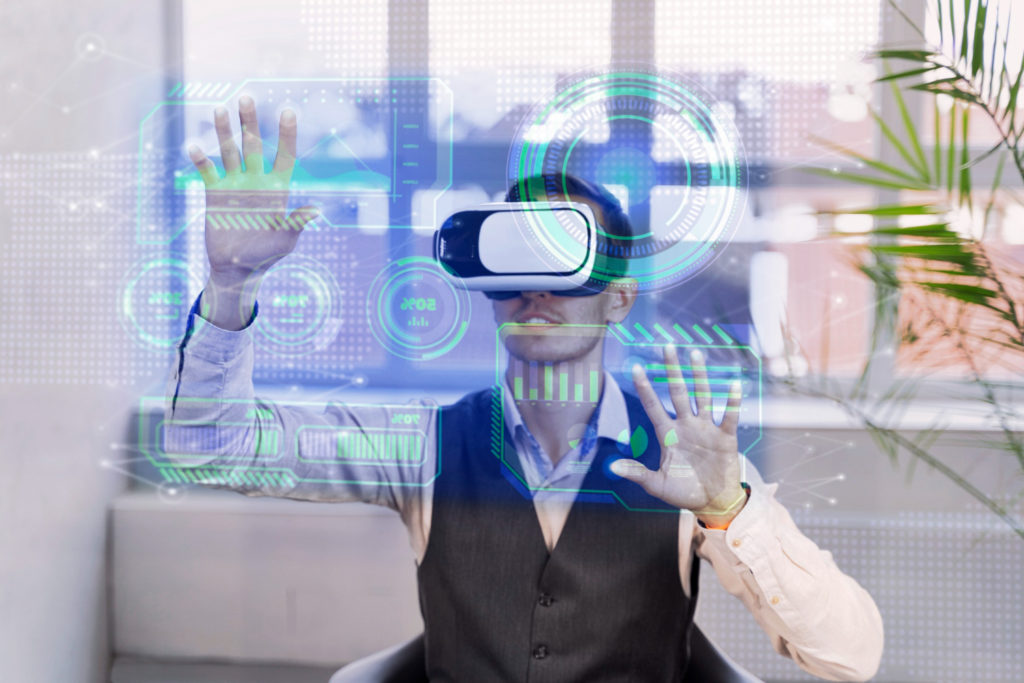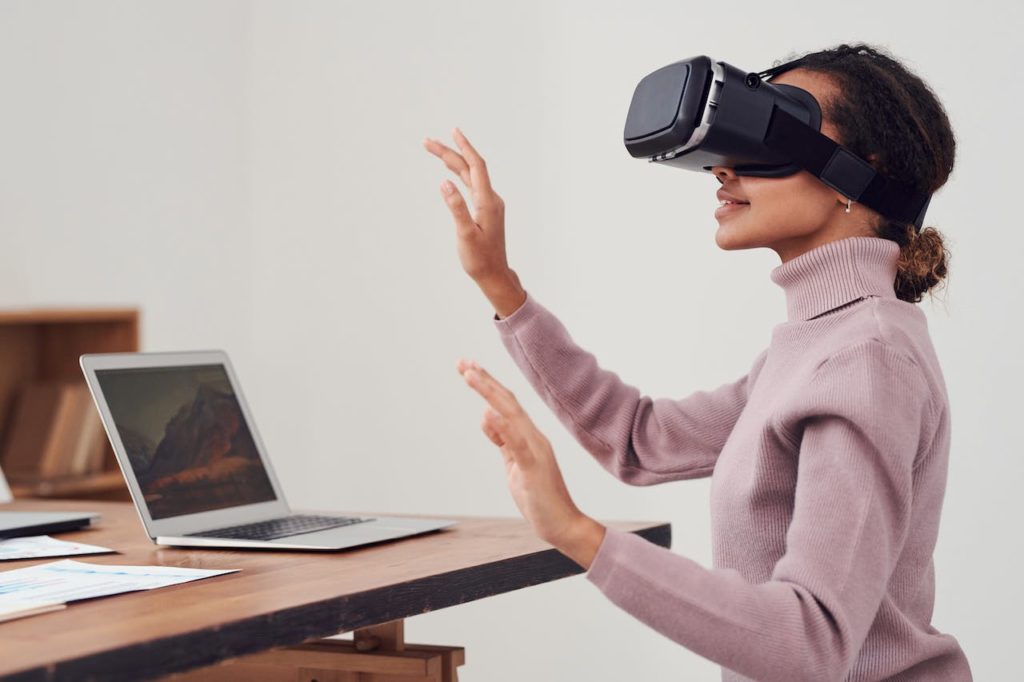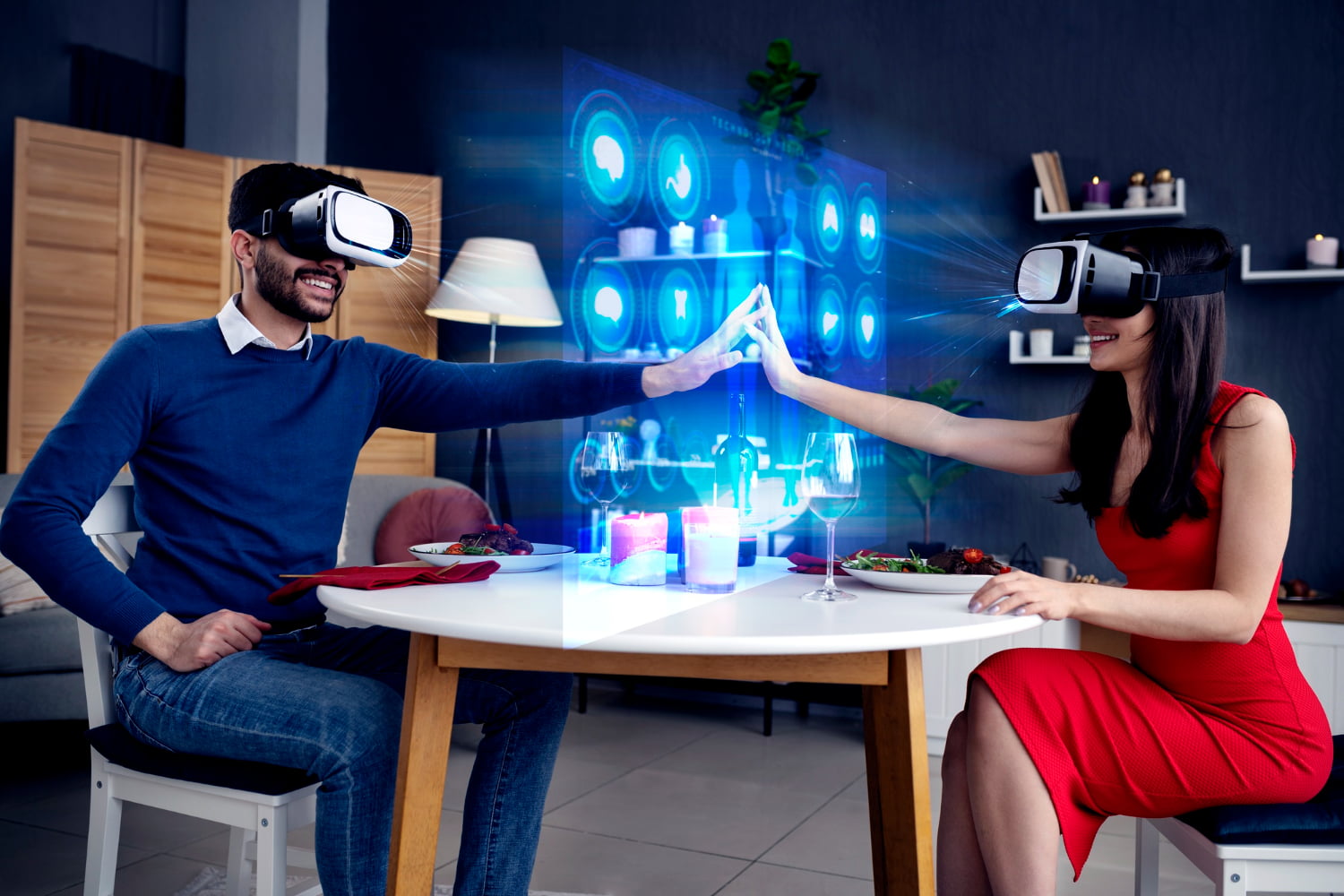The digital age has ushered in groundbreaking technologies like Augmented Reality (AR) and Virtual Reality (VR), fundamentally altering how we interact with our world. AR enhances our physical world by overlaying digital information, while VR immerses us entirely in a digital environment. These technologies offer endless possibilities, reshaping industries from gaming to healthcare.
How Augmented Reality Works
Augmented Reality (AR) operates through a sophisticated blend of hardware and software. The hardware component primarily involves cameras and sensors that capture and interpret the real world, while displays such as smartphones or smart glasses are used to project digital images. The software, on the other hand, includes advanced algorithms that process the input from the hardware and overlay digital information onto the real world in real time.
Comparison of AR with VR and Other Immersive Technologies
AR is often juxtaposed with Virtual Reality (VR) and other immersive technologies. While VR transports users to entirely virtual environments, AR enhances the real world by overlaying digital elements onto it. This key difference allows AR users to remain connected to and interact with their physical surroundings, making AR more suitable for applications that require real-world interaction.

Key Features and Benefits of AR
AR’s unique capability to blend digital content with the physical world offers numerous benefits:
- Interactive Experience: AR facilitates interaction with digital elements in the real world, enhancing user engagement.
- Accessibility: With the widespread availability of smartphones, AR can be easily accessed by a vast audience.
- Enhanced Information Delivery: AR provides a platform to deliver information in a more engaging and contextual manner, making it ideal for educational and training purposes.
Applications of Augmented Reality
Entertainment and Gaming
In entertainment and gaming, AR has been a game-changer. Popular games like Pokémon GO have demonstrated how AR can create immersive gaming experiences by blending virtual elements with the real world, encouraging physical activity and exploration.
Healthcare
AR has significant applications in healthcare, providing innovative ways for medical training and patient care. It allows medical professionals to visualize complex medical data and perform simulated surgeries, enhancing both training and diagnostic procedures.
Retail and Marketing
In retail, AR transforms the shopping experience by allowing customers to visualize products in a real-world context through virtual try-ons. It also plays a pivotal role in marketing, creating interactive and engaging advertisements that offer a more realistic view of the products.
Education and Training
AR’s impact on education is profound, offering an interactive and immersive learning environment. It enhances the understanding of complex subjects through 3D models and simulations, making education more engaging and effective.
Tourism and Navigation
In tourism, AR enhances visitor experiences by providing real-time information about landmarks and historical sites, making navigation easier and more informative. This application of AR in tourism adds an educational and interactive layer to travel, enriching the overall experience.
The Future of Augmented Reality
Technological Advancements and Challenges in AR
The trajectory of Augmented Reality (AR) is marked by continuous technological advancements, shaping a future filled with possibilities. Improvements in hardware, such as more compact and powerful AR glasses, and advancements in software algorithms are pushing the boundaries of AR applications. Enhanced computer vision and more sophisticated AR algorithms are making experiences more immersive and realistic.
However, these advancements are not without challenges. The foremost among them is the need for better battery life in AR devices, a critical factor for user convenience and practicality. Additionally, privacy concerns and data security remain paramount, as AR devices often capture and process vast amounts of personal and environmental data. There’s also a pressing need to refine the accuracy and reliability of AR systems to ensure seamless integration into daily life.
Potential Future Developments and Integrations
The future of AR is likely to see its integration with other emerging technologies such as AI and IoT, opening up new applications and use cases. This integration is expected to lead to smarter AR systems that can understand and interact with the environment in more sophisticated ways.
For instance, AR could be used in smart homes and cities to provide real-time information overlay on infrastructure and services. The convergence of AR with technologies like 5G could also dramatically improve the speed and responsiveness of AR applications.
Augmented Reality in Everyday Life
AR is set to transform our daily experiences by making them more interactive and informative. For example, AR can turn mundane tasks like shopping or navigation into immersive and interactive experiences. By overlaying digital information onto the physical world, AR can provide contextual information in real-time, such as product details in stores or historical facts about a landmark during a city tour.
In the business realm, AR is a game-changer in enhancing efficiency and reducing operational costs. In sectors like manufacturing and logistics, AR can provide workers with real-time information and guidance, improving accuracy and speeding up processes. Retailers can leverage AR for virtual try-ons and in-store navigation, reducing the need for physical inventory and enhancing customer experience.
AR’s impact on education and training is profound. It provides a more engaging and interactive way of learning, transforming abstract concepts into 3D visualizations that students can interact with. This technology is particularly beneficial in fields like medicine and engineering, where practical, hands-on experience is crucial. AR simulations can replicate real-life scenarios for training purposes without the associated risks or costs.
In entertainment and social interaction, AR is creating new forms of engagement. AR games like Pokémon GO are just the beginning. We can expect more immersive experiences, where digital and physical worlds blend, offering new ways to socialize, play, and explore. The integration of AR in social media platforms is also enhancing how we connect and interact with others, making virtual interactions more lively and engaging.

Phygital Convergence: Merging Digital and Physical Realms
The advent of augmented and virtual reality technologies has catalyzed the emergence of a ‘phygital’ world – a blend of the physical and digital realms. This convergence is creating enriched, immersive experiences that redefine our interaction with the world around us.
Business and Retail Innovations
In the retail sector, this convergence is revolutionizing the shopping experience. Imagine walking into a store and trying on clothes virtually, or seeing how furniture looks in your home before making a purchase. This hybrid shopping experience combines the tactile satisfaction of in-store shopping with the convenience and additional information provided by online platforms. Retailers are leveraging AR and VR to create interactive advertisements and virtual showrooms, leading to an enhanced and more informed shopping experience.
Transforming Education
The impact of phygital convergence in education is equally profound. Digital tools integrated into physical classrooms are creating a blended learning environment. AR and VR technologies enable students to explore complex scientific models, historical events, and geographical locations virtually, thereby making learning more interactive and engaging. This integration is not just about enhancing the visual experience; it’s about making education more accessible, inclusive, and tailored to individual learning styles.
Revolutionizing Healthcare
Healthcare is undergoing a significant transformation due to phygital convergence. Telemedicine, combining digital healthcare delivery with traditional practices, is making healthcare more accessible, especially in remote areas. AR in healthcare allows medical professionals to overlay crucial information during surgeries or training, leading to more precise and safer medical procedures.
This integration is also enabling remote patient monitoring, where doctors can track patients’ health in real-time, leading to better and more proactive healthcare management.
Urban Planning and Smart Cities
Urban planning and the development of smart cities are also benefiting from this convergence. AR and VR are being used to visualize urban development projects, allowing planners and stakeholders to analyze and experience the impacts of their decisions before they are implemented.
This technology aids in efficient planning, reduces costs, and ensures sustainable urban development. Smart cities integrate digital networks with physical infrastructure, enhancing city services and sustainability through improved traffic management, energy distribution, and public safety systems.
Socio-Cultural Impact
Phygital convergence is also influencing socio-cultural dynamics. It’s creating a global community that transcends geographical and physical boundaries. Through AR and VR, cultural experiences, global events, and social interactions can be shared and experienced in a more immersive and inclusive way. This technology is fostering new forms of expression and communication, reshaping societal norms, and offering new avenues for global connectivity and understanding.
The phygital world represents a future where digital and physical realities are no longer separate but interconnected in a way that enhances our experiences, understanding, and interactions. It promises a more integrated, efficient, and enriched way of living, transforming industries, education, healthcare, and societal interactions.
For further exploration into how technologies like AI and telemedicine are reshaping healthcare, visit The Future of Healthcare: How AI and Telemedicine are Reshaping Patient Care at Micro2media.com.
Conclusion
Explore the convergence of Augmented Reality (AR) and Virtual Reality (VR) in ‘Augmented Reality and Virtual Reality: Merging Digital and Physical Worlds.’ This insightful article delves into how AR and VR are revolutionizing industries, enhancing daily experiences, and shaping the future. From transforming retail and healthcare to revolutionizing education and urban planning, discover the boundless possibilities of these technologies.
